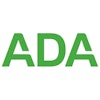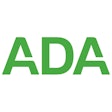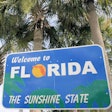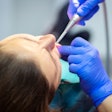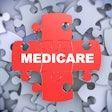
As states across the U.S. struggle to work out strategies and guidelines for implementing the insurance benefits mandated by the U.S. Patient Protection and Affordable Care Act (ACA), California appears to be ahead of the curve.
This week, Covered California -- the state's health insurance exchange -- unveiled two plans for pediatric dental coverage, and while some are lauding the simplicity of the plans, others say they create inequities.
The ACA requires that insurance coverage be available for 10 essential health benefits (EHBs), including pediatric oral and vision care, and that EHBs must be offered to individuals and small groups both inside and outside marketplace exchanges.
The ACA gave the states flexibility to offer pediatric dental care in three ways: as embedded, bundled, or standalone plans. Covered California chose to forego an embedded plan because embedded plans include pediatric dental coverage as part of the overall health plan and require everyone to pay the same premium whether they have children or not, according Covered California spokeswoman Anne Gonzales.
Bundled plans include both health insurance and pediatric dental coverage that are paid for with a single premium, while standalone plans offer both health and pediatric dental coverage but the consumer writes checks to two different insurance companies, Gonzales noted. Consumers will not be able to go on the exchange and buy only dental coverage; they must buy a health plan through the exchange to be able to buy dental coverage, she added.
Thus, beginning in October, Covered California will offer bundled and standalone plans for pediatric dental coverage. Nine standalone plans are being offered by five insurers -- Anthem Blue Cross, Blue Shield of California, Delta Dental, Liberty Dental, and Premier Access Dental -- while Health Net Dental is available only in a bundled option.
Three different product types are available, depending on where the child lives: dental health maintenance organizations (DHMOs), dental preferred provider organizations (DPPOs), and dental exclusive provider organizations (DEPOs).
Standalone plan premiums range from less than $10 a month for an HMO plan in some areas to about $30 a month for a DPPO, according to Covered California.
Covered California dental benefit plans feature standard co-payments and deductibles. Unlike Covered California's health insurance plans, dental plans come in two options: an 85% plan, which features higher premiums but lower average out-of-pocket costs; and a 70% plan, with lower premiums and higher average out-of-pocket costs.
Why not embedded?
But critics, including California Insurance Commissioner Dave Jones and the Children's Partnership advocacy group, say that excluding embedded dental coverage will drive up the costs.
"We have learned that ... some health insurers or health plans that originally submitted a product with pediatric dental coverage embedded only pulled out that coverage at Covered California's insistence and are now indicating that the cost of the standalone or bundled product will be significantly higher than it would have been if pediatric dental coverage was embedded in their health insurance products -- both in terms of the premium charged and due to the imposition of a separate out-of-pocket maximum," Jones wrote in a June 27 letter to Covered California.
According to Gonzales, the goal was to keep the uniformity of health insurance plans and make it easier for consumers to know what they are buying.
"We wanted people to be able to buy insurance online and quickly see prices and the provider network, and they don't have to look at all the benefits because all the benefits are standard," she told DrBicuspid.com. "But if we start embedding certain benefits into plans, like the pediatric dental benefit, it could be confusing for consumers."
Gonzales also pointed out the law requires only that pediatric dental insurance be available, not that parents must buy it for their children.
Covered California has sole authority to make decisions regarding the pediatric benefit and how it is offered to individuals and families, according to the state Department of Managed Health Care. The managed care department, which will regulate approximately 96% of the plans, worked with Covered California on technical issues involving the coverage.
Regarding complaints that excluding embedded dental coverage will cost more, Gonzales said it is unknown how much the price would be for embedded plans because insurers weren't required to include such plans.
"We can't even imagine what those rates would be because we never entertained that or solicited bids for that," she said.
The California Dental Association (CDA) supports offering standalone pediatric dental benefit plans, noting that more than 95% of Californians who have dental coverage have it through dental plans, not medical plans.
"CDA believes the spirit of the federal law is to require children 19 and under to have dental coverage, and we support that," the CDA said in a prepared statement. "However, this decision offers the least disruption for families purchasing coverage for their children in the exchange and will allow parents to maintain their existing relationship with their dentist, as the ACA intended. We understand that implementation of ACA is a complex issue and believe that the current approach by Covered California creates the greatest potential for children to receive dental care by not further complicating the situation with significant changes to the dental delivery system."



